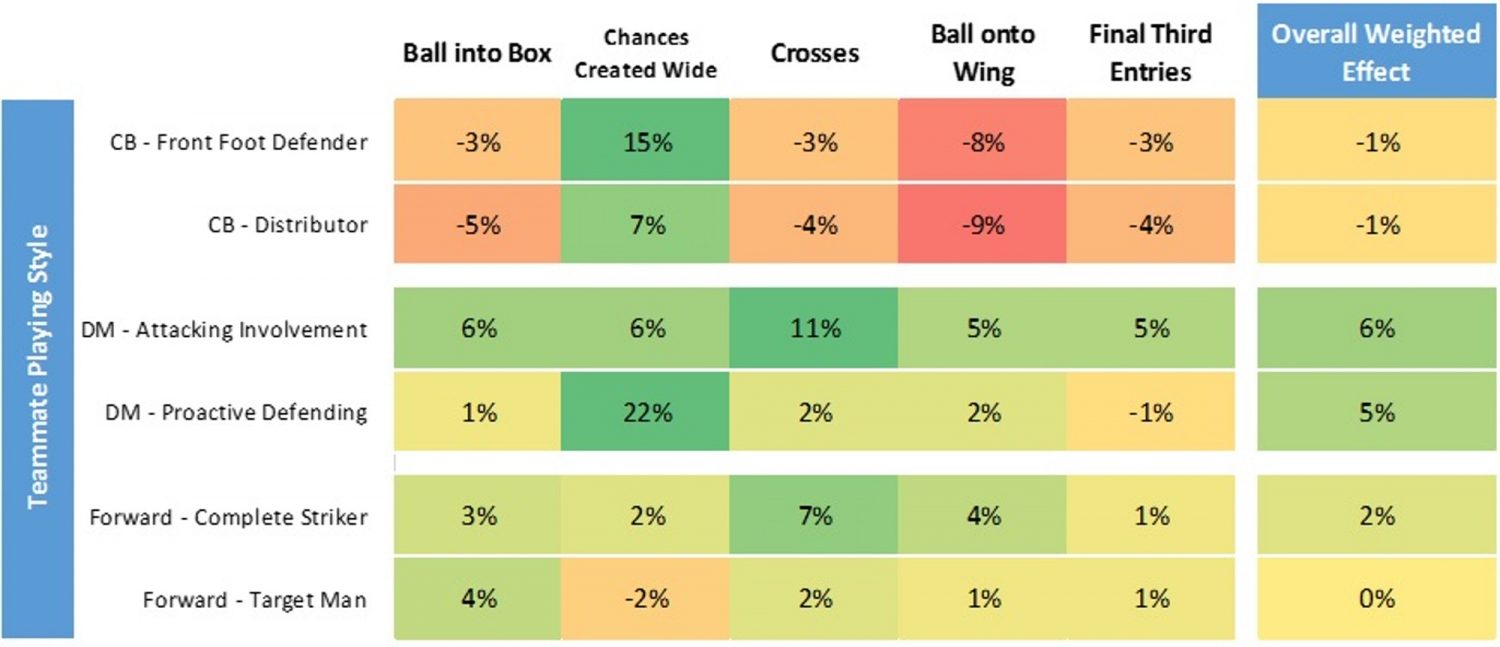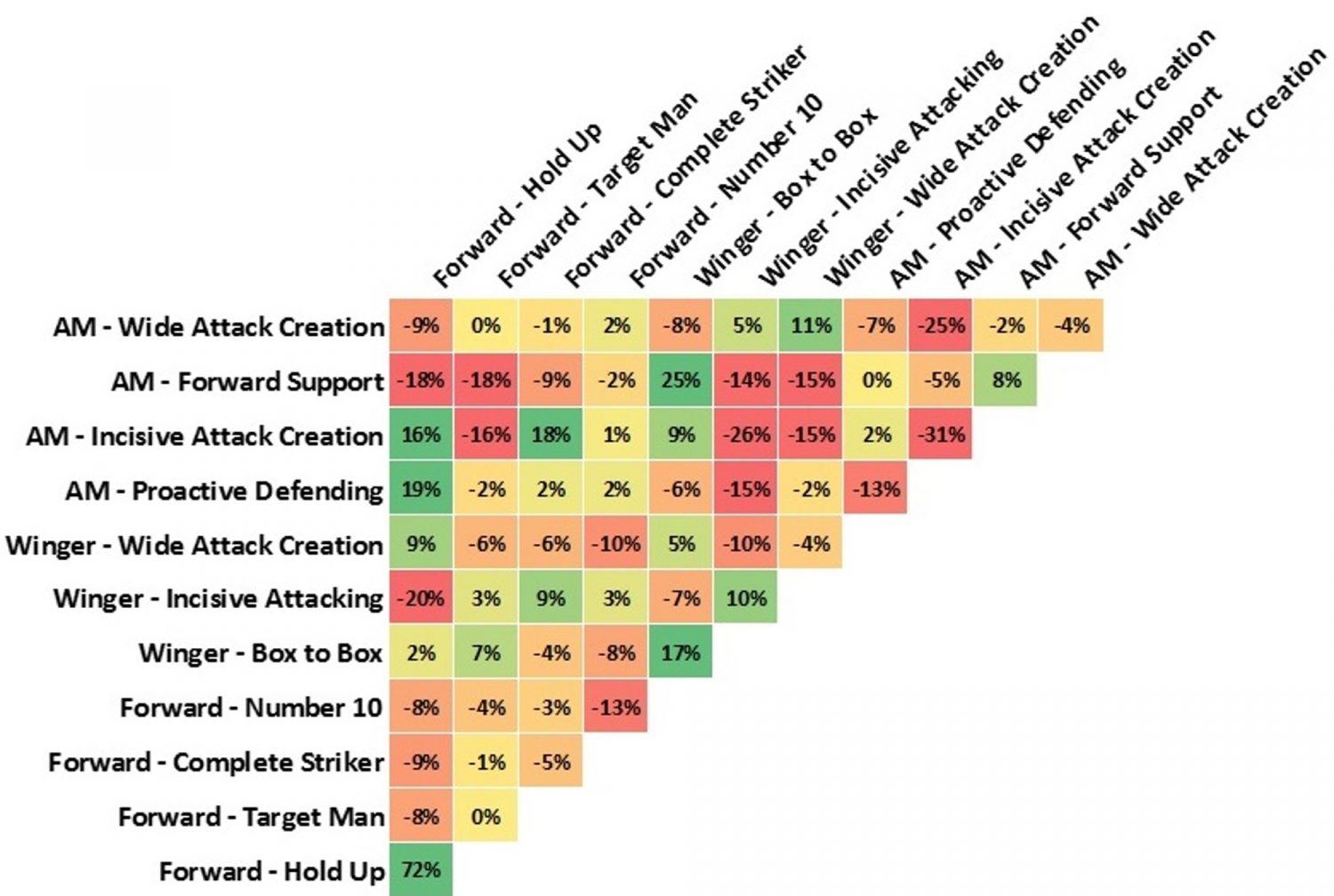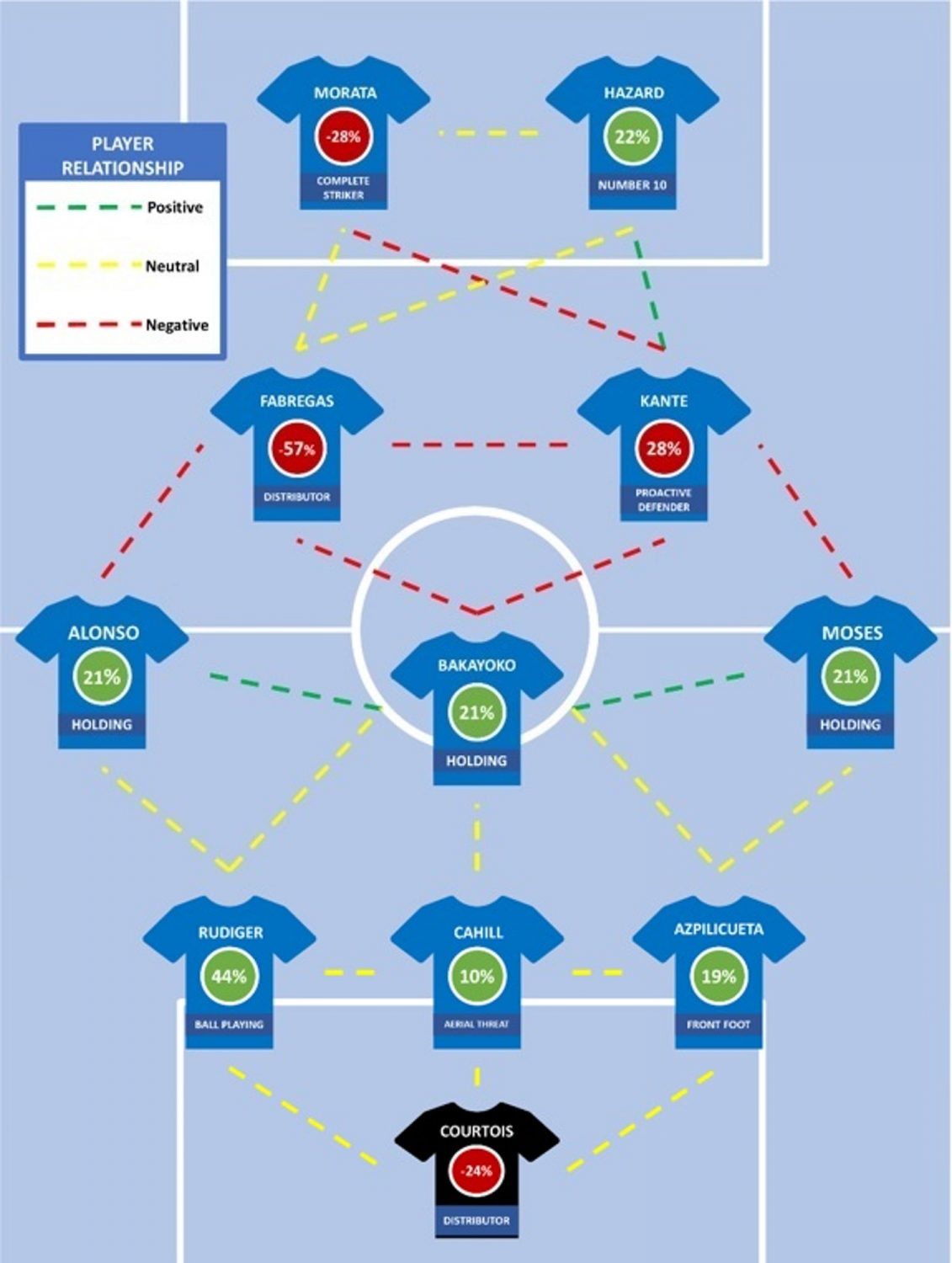Tom Brown shares a written version of his poster presentation, which was showcased at the 2019 OptaPro Analytics Forum.
His analysis was largely influenced by the work of Mark Carey and Mladen Sormaz, which was presented at last year’s Forum. Mark and Mladen’s work is summarised here in an earlier blog.
Click here to view Tom’s poster.
Introduction
This study aims to classify the playing styles within each position and then examine the relationships between the playing styles by exploring how one style performs in conjunction with another.
Classifying playing styles would allow for more accurate comparisons between players. For example, it would be unfair to compare a player like Giroud to every other striker, as his style of play and function he provides for his team is very different to that of someone like Aguero. Therefore, by only comparing Giroud to other players with same playing style, it would allow for meaningful insights about his performance. It would also provide an understanding into what skills and stats contributes to a playing style.
Consequently, if a coach is wanting a player to perform a certain role, their performance can be assessed against these contributing factors to ensure they are playing in the required way.
By identifying how player roles interact with each other, it would allow coaches to understand if the combination of playing styles within their team boosts or hinders performance. If a player is underperforming it may be as a result of playing alongside teammates with incompatible playing styles and therefore actions can be taken to rectify this.
Using this analysis, a coach would be able to assess their options and choose the best combinations of players in order to optimise performance.
Playing style clustering
Opta data was taken from the 2017-2018 season across the “Top 5” leagues and aggregated for each player then adjusted by possession per 90 minutes.
One initial challenge was defining the positions of players, due to the variety in how clubs record a position and also because of players playing multiple positions throughout the season. To reduce the complexity players were classified into one of eight positions: goalkeeper, central defender, full back, defensive midfielder, central midfielder, attacking midfielder, winger and forward.
Taking each position separately, player events were put into a Principal Components Analysis (PCA) to reduce the dimensionality and identify groupings of correlated events.
For example, in Figure 1, the PCA heatmap for attacking midfielders has identified that players who make more tackles, also make more interceptions, clearances and are less likely to take shots or have touches inside the opposition’s box. The generated principle components allowed me to define the attacking midfielder playing styles as ‘Wide Attack Creation’, ‘Incisive Attack Creation’, ‘Proactive Defending’ and ‘Forward Support’. PCA results for all positions can be found here.

The PCA also provides a weighting of how much a player fits into each style. For example, in Figure 2 we can see that it has identified that Mkhitaryan largely fits into the ‘Incisive Attack Creation’ style whereas Candreva is weighted towards ‘Wide Attack Creation’.

Playing style interactions
Once playing styles were identified for each position, the next step was to explore how they interact with each other. I took the events contributing to each style and performed a regression analysis to examine how they changed based on the style of the teammates they were playing with.
From the example in Figure 3, we can say that on average a ’Wide Attack Creation’ attacking midfielder produces 15% more chances from wide positions when playing with a centre back with a style of ‘Front Foot Defender’.
The changes in individual events were then weighted based on their importance in the principle component and summed to provide the overall effect one playing style as on another.

Once this had been calculated for every position, the effect two playing styles had on each other was aggregated to identify any beneficial and detrimental combinations. In Figure 4 we can see that an attacking midfielder with a playing style of ‘Incisive Attack Creation’ create a beneficial relationship with forwards of style ‘Hold Up’ or ‘Complete Striker’, but creates a negative relationship with a ‘Target Man’. Full details and results of playing style interactions can be here.

Applications and extensions
The hope is that this type of analysis will provide coaches a way to understand if the combination of playing styles within their team boosts or hinders performance, allowing them to assess their options and choose the best combinations of players in order to optimise performance. Figure 5 shows how this could work in practice.

It would also help prioritise transfer targets, as you would know a target’s playing style and therefore can understand if they will create new relationships within the team or upset existing ones. The same principle can be applied when deciding whether to accept a transfer offer for one of your existing players.
If extending the research, it would be interesting to look at the effect a certain playing style has on the performance of opposing teams’ players. This would allow analysts to identify if a particular team selection could prevent an opponent’s player from performing their role or alternatively warn a coach about the opposing teams’ relationships that are likely to hinder their performance.
For more information you can follow Tom on Twitter: @TomBrownTweets